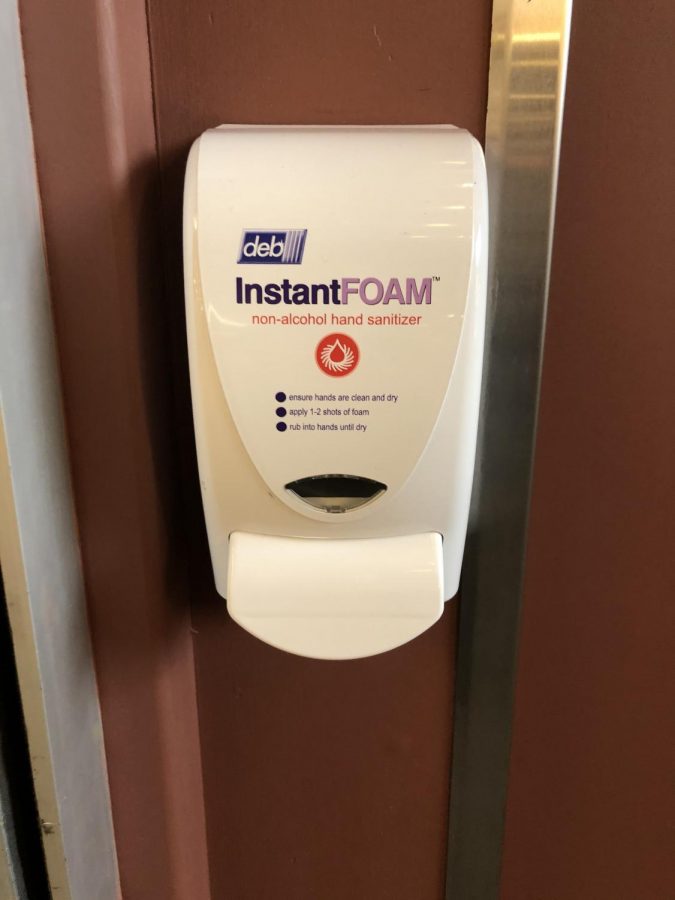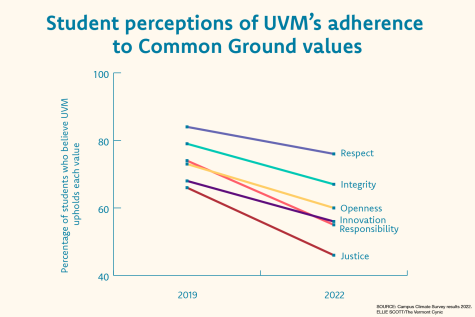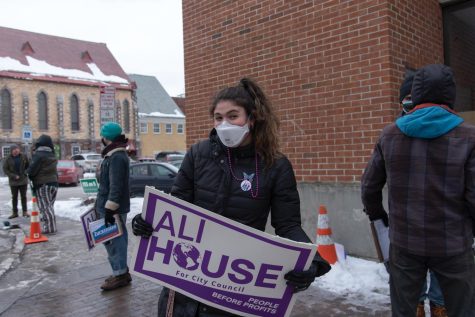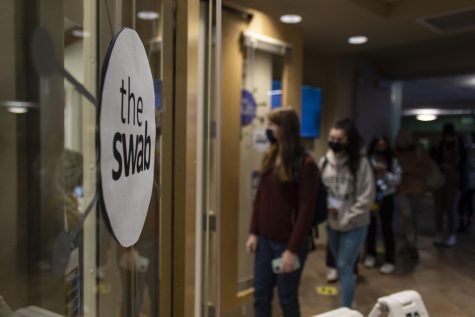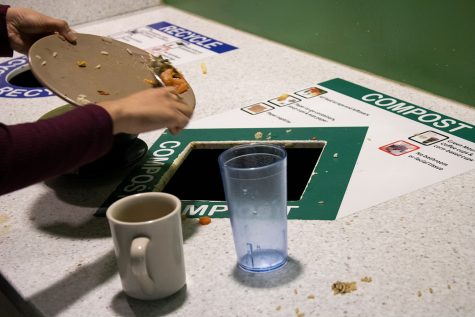UVM’s hand sanitizer falls below CDC reccomendations
Hand sanitizer stations like this one are mounted throughout the University. According to the wall mounted cases, the sanitizer does not contain any alcohol despite CDC recommendations.
March 18, 2020
Amid a worldwide COVID-19 pandemic, UVM has not and will not have CDC recommended hand sanitizer for use throughout the University.
In a March 17 email, Gary Derr, Vice President for operations and public safety, stated wall-mounted hand sanitizer stations throughout the University do not contain the CDC recommended 60% alcohol in the sanitizing solution.
Though attempts have been made to get more 60% alcohol sanitizer, the University has so far been unable to obtain any, for the time being, the email stated.
“The University expects to receive 100 cases of it by mid-April,” Derr stated.
Before the outbreak of the pandemic, UVM didn’t purchase 60% alcohol sanitizer, because the University believed it was fine for daily use, said UVM Spokesperson Enrique Corredera.
“Prior to this pandemic, the sanitizer available on campus was considered adequate for regular daily use,” Corredera stated in a March 17 email.
Hand sanitizing stations across the University read “non-alcohol hand sanitizer” on their outside cases.
According to a CDC webpage called “Show me the science — When & how to use hand sanitizer,” the agency says hand sanitizer with at least 60% alcohol is most effective at killing germs.
“Many studies have found that sanitizers with an alcohol concentration between 60–95% are more effective at killing germs than those with a lower alcohol concentration or non-alcohol-based hand sanitizers,” the site states.
Hand sanitizers that don’t have the minimum 60% alcohol content may not work to eliminate all germs or may only delay the growth of germs instead of killing them, according to the CDC.
For now, the University encourages washing hands with soap and water for at least 20 seconds, following CDC recommendations, instead of relying on hand sanitizer, Corredera stated in the email.
“Water and soap are widely available on our campus, and most sanitizer dispensers are co-located with facilities where water and soap are available,” he said. “This is why we are advising individuals to rely on water and soap instead.”
For those that are still on campus in dorms or working as staff or faculty are encouraged to share available alcohol-based hand sanitizer when possible and to continue social distancing.


